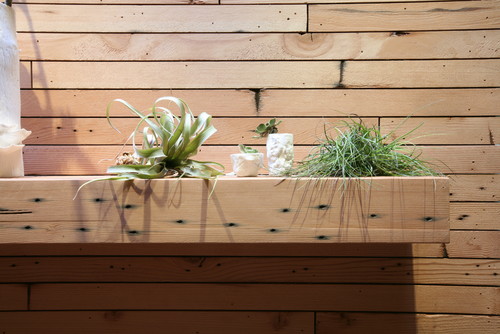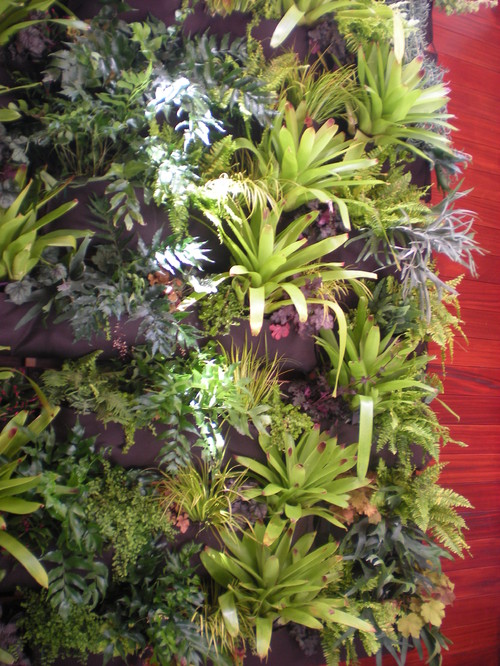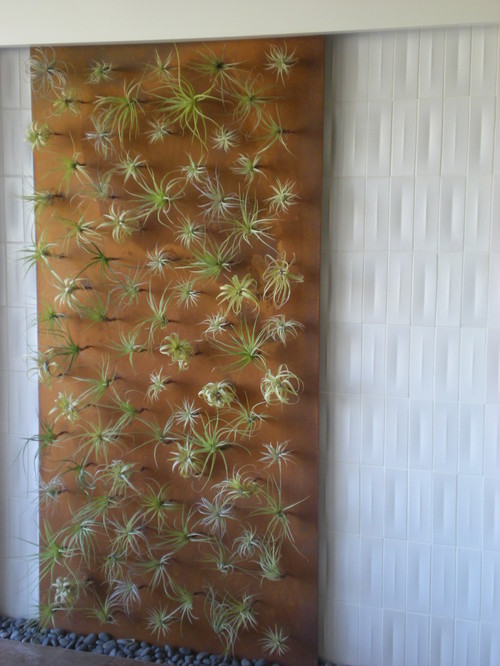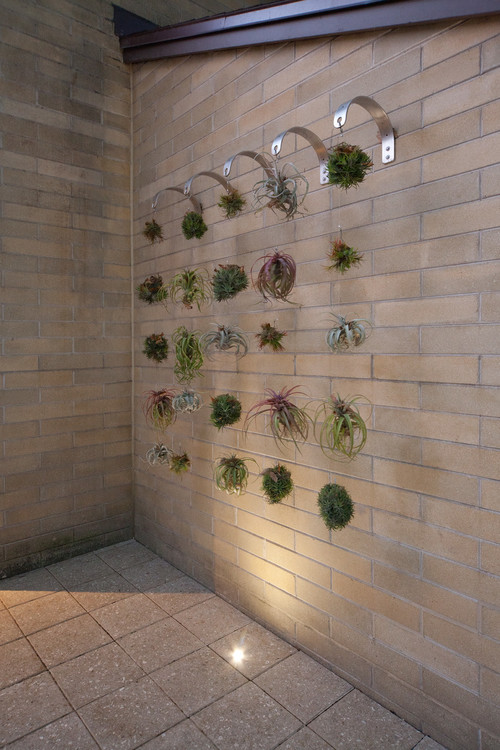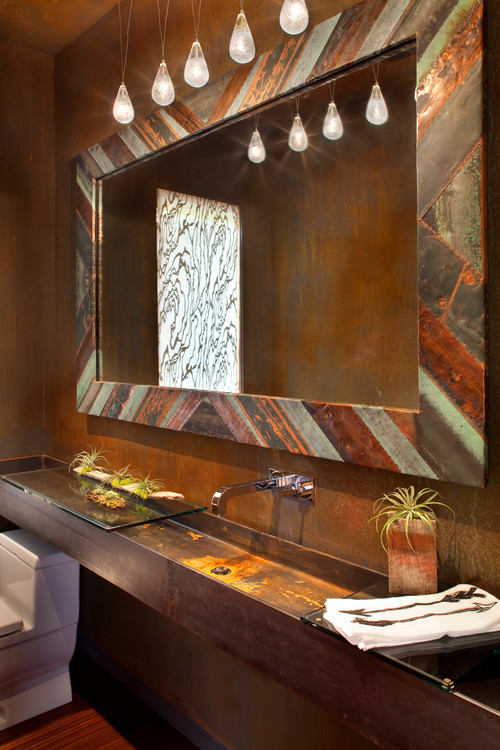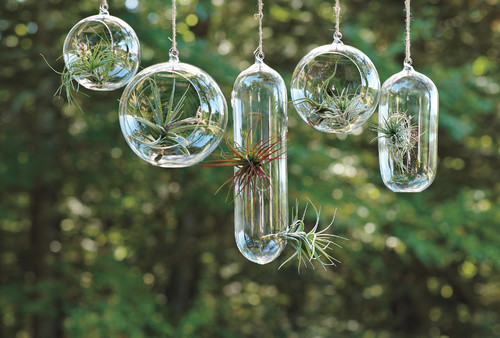Air Plants: Where to Buy & Care Guide

Tillandsia (otherwise known as the common air plant) may grow naturally in hot and humid climates like the Southern United States or rainforest, but they do particularly well indoors and in shaded outdoor gardens in Southern California.
In fact, if you’ve opened up your popular home design catalogs lately, you’ve probably seen these small, wispy plants featured subtly in glass vases, natural wood center pieces and more. Air plants are trending in contemporary, minimalist design.
Most people mistakenly think that Tillandsia are fake, but they are very much alive and so easy to care. Here’s why your home needs these little natural gems.
What Are Air Plants?
Air plants are epiphytes that grow in a non-parasitic manner attached to other living plants. They derive moisture and nutrients necessary to live from the air or debris that falls from their host plant. They don’t root in the soil. The only purpose of their roots is to attach themselves to another plant, rocks, trees or even the ground.
Orchids and bromelaids are actually air plants. That Spanish moss you use to cover soil in container plants? That’s an air plant, too. But, Tillandsia are the air plants trending at the moment and there are over 500 varieties to choose from.
Some air plants are grown for their attractive flowers, which provide nectar to hummingbirds, butterflies and bees while others are grown for striking foliage. They reproduce either by seed or offshoots called pups (sort of like succulent rosettes).
How to Display Air Plants
Leave Them Alone –
As you can see, Tillandsia look pretty cool just hanging out on their own. Place them on mantles, in decorative bowls or in vases (without water) for a little pop of color. Also, if you see an air plant that you like, don’t hesitate to buy it. Leave it out and take time to decide what to do with it later.
Go Vertical –
Air plants can help plug holes in your existing vertical garden by just tucking them into spots where you need coverage. Look closely, and you’ll see plenty of Tillandsias in this gorgeous garden.
Remember, not only are indoor vertical gardens aesthetically pleasing, they also help improve the quality of your home’s air.
This technique is also becoming quite popular. The air plants are suspended in the air by small steel screws specifically designed for air plants. The benefit to this look is that Tillandsia air plants can be easily removed for watering or rearranged should you want to change up the look. Flora Grubb Gardens in San Francisco will ship you the screws along with a variety of Tillandsia air plants, if you like.
String Them Together –
Another clever way to decorate an otherwise bare wall is to string a variety of air plants together using clear fishing wire or string. This stunning application is near the front door of a home.
Separate areas in your home or garden (if conditions permit) by creating a wall of air plants in a similar manner.
Skip Flowers –
Tillandsia air plants will stay alive with regular watering and look fantastic in applications where you’d normally place a vase full of flowers (that you’d eventually have to toss).
Buy Hanging Vases –
Glass orbs are easy to find at home decor stores around town. These are from West Elm. Don’t place water in the vases as Tillandsia need to dry out between watering.
How to Care for Air Plants
Though you won’t have to worry about soil conditions, you will need to integrate indoor air plant care into your routine, however. You may not need to pay much attention to your outdoor Tillandsias, depending on where you place them.
If you’re looking to get your kids involved in gardening, put them in charge of your easy air plants.
Indoor Tillandsia Care –
1. Air plants require constant air circulation. After all, that’s how they take in moisture and nutrients.
2. They need watering probably 2-3 times per week. If you mist them, make sure to cover the entire plant thoroughly. They’ll also take to being dunked in a bowl of water for about an hour or so for a more thorough watering.
3. Even though they can tolerate heat, it’s imperative to keep them out of direct sunlight. Different Tillandsias prefer different light exposure so check the tags or seek advice before placing one. Generally, expect indoor Tillandsias to do well in bright light.
4. Fertilize air plants with a bromelaid fertilizer (17-8-22). Some experts say this should be done twice a month.
Outdoor Tillandsia Care –
Tillandsia will thrive in a mild, coastal Southern California climate. They will not tolerate dry heat, frost, or extreme cold. If they aren’t in an area with irrigation spray, you’ll need to water them.
How to Attach Air Plants
For the times that you may want to permanently attach air plants to a tree or home decor item, here’s how easy it is to do it. Tillandsia air plants are versatile in that they can grow in any direction, not just upright.
- Make sure that the item you’re going to use as a base doesn’t have any fungi, disease or rot that may be harmful to your air plants.
- The object the air plant attaches to must be able to get wet.
- Note the mature size of your air plant and be sure not to cram it in too tightly as air circulation is imperative.
- Feel free to use waterproof glue (sparingly), wire, fishing line, twisty ties, nails or staples. Avoid copper wire as it can kill Tillandsia and don’t nail or staple through a growing part of the plant. The latter is best with plants that have roots or a woody stolen.
That’s it. Eventually, the air plant’s roots will attach to the object, holding it in place.
Where to Buy Air Plants
Keep an eye out at your local nursery. I recently spotted an entire display of various Tillandsia air plants at Home Depot on Balboa Avenue in San Diego. But, if you need inspiration, contact a specialty nursery with design in-house such as Green Gardens in Pacific Beach. They have ready-made Tillandsia arrangements on display, however, you can work with them to create the look you desire.
Your Turn…
How do you display air plants in your home? Do you find them easy to care for?
